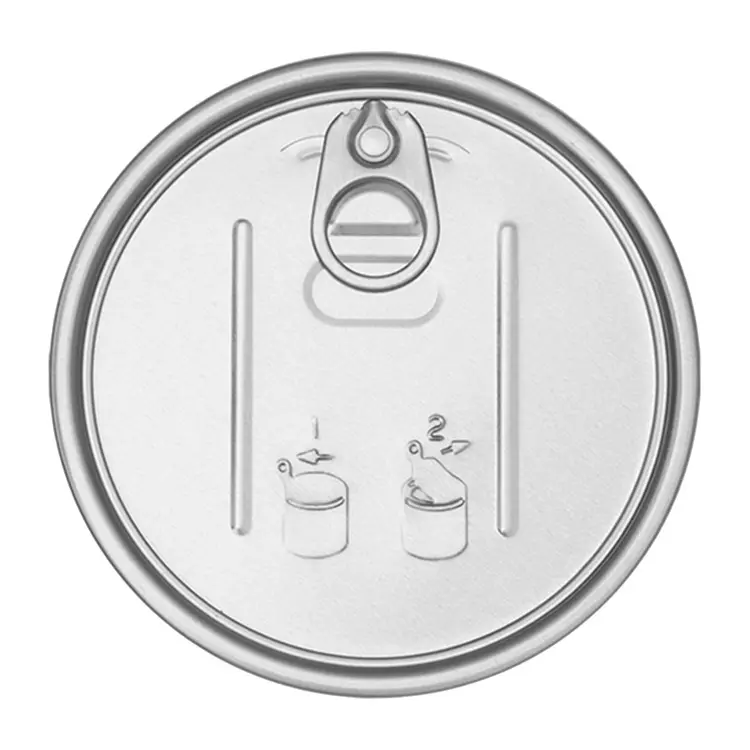In the competitive beverage packaging market, 360 End technology represents one of the most significant innovations in aluminum can design. Developed to enhance consumer experience and sustainability, the 360 End has transformed traditional easy-open ends into a fully removable top, creating a “drink-from-can” experience similar to a cup.
For B2B buyers in the beverage, beer, and packaging sectors, understanding the features, benefits, and production requirements of the 360 End is essential to meet both market expectations and environmental standards.
1. What Is a 360 End?
A 360 End (also known as a full aperture end) is an advanced type of easy-open end (EOE) designed for aluminum beverage cans. Unlike standard SOT (Stay-On Tab) ends, the entire lid of a 360 End can be removed safely and smoothly when opened.
This innovative structure turns the can itself into a portable drinking vessel, providing an enhanced sensory and convenience experience for the consumer.
Key Features of 360 End Design:
-
Full Aperture Opening: Allows consumers to drink directly from the can as if from a cup.
-
Smooth Edge Technology: Ensures safety with precision-engineered edges to prevent cuts.
-
High Seal Integrity: Maintains internal pressure and freshness even under challenging logistics.
-
Lightweight & Recyclable: Made from high-quality aluminum that supports 100% recyclability.
2. Benefits of 360 End for Brands and Manufacturers
The 360 End design brings value to both beverage producers and end consumers.
2.1 Enhanced Consumer Experience
-
Offers a more natural drinking experience, improving aroma and flavor perception.
-
Widely used in premium beverages, beers, and ready-to-drink products.
2.2 Sustainability and Recycling
-
Aluminum 360 Ends are fully recyclable and align with global sustainability goals.
-
The removable lid can be easily collected and recycled, reducing environmental impact.
2.3 Brand Differentiation
-
The unique “open-can” experience creates strong visual and emotional appeal.
-
Ideal for marketing campaigns that highlight innovation, freshness, and lifestyle connection.
2.4 Operational Compatibility
-
Can be produced using modified CDL (Coca-Cola Dome Lid) or SOT lines with minor tooling adjustments.
-
Designed for compatibility with mainstream filling and seaming equipment.
3. Applications in the Beverage Industry
The 360 End has gained rapid adoption across multiple beverage categories:
-
Beer and Craft Brews: Enhances aroma release, popular in premium beer packaging.
-
Juice and Dairy Drinks: Allows for easy pouring and wider openings for thicker liquids.
-
Ready-to-Drink (RTD) Cocktails: Improves aesthetic appeal and drinking comfort.
-
Sports & Energy Drinks: Provides convenience and premium presentation for on-the-go consumers.
Its combination of functionality and modern design makes it a preferred choice for brands aiming to elevate packaging aesthetics while supporting circular economy principles.
4. Technical Considerations for 360 End Production
For manufacturers and packaging converters, producing 360 Ends requires attention to:
-
Material Specifications: Typically 5182-H19 aluminum for ends, optimized for strength and formability.
-
Precision Tooling: Ensures consistent tear performance and lid separation without sharp edges.
-
Coating Systems: Food-grade, BPA-NI coatings to ensure safety and corrosion resistance.
-
Quality Control: Pressure resistance, vacuum leak, and curl height testing for can integrity.
Investing in high-speed production lines with automated inspection systems helps achieve both performance and cost efficiency.
Conclusion
The 360 End is more than a packaging innovation — it’s a revolution in consumer interaction and brand storytelling. By combining convenience, safety, and sustainability, it sets a new benchmark for beverage can design.
For manufacturers and brand owners, adopting 360 End technology represents a strategic move toward premiumization, eco-friendly manufacturing, and enhanced market differentiation.
FAQs
1. What is the difference between a 360 End and a standard easy-open end?
A 360 End offers a fully removable lid, while standard SOT ends leave a small opening. The 360 End provides a cup-like drinking experience.
2. What materials are used for 360 End production?
They are typically made of 5182 aluminum alloy, with BPA-NI or epoxy-based coatings for food safety and corrosion protection.
3. Are 360 Ends compatible with existing filling lines?
Yes, most standard CDL or SOT canning lines can be adapted with minor tooling changes.
4. Which beverage products commonly use 360 Ends?
They are widely used in beer, RTD cocktails, juices, and functional beverages where premium experience and brand differentiation are key.
Post time: Nov-07-2025








